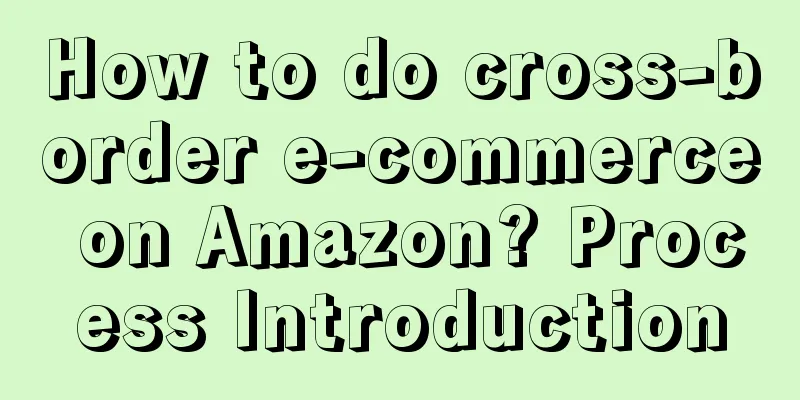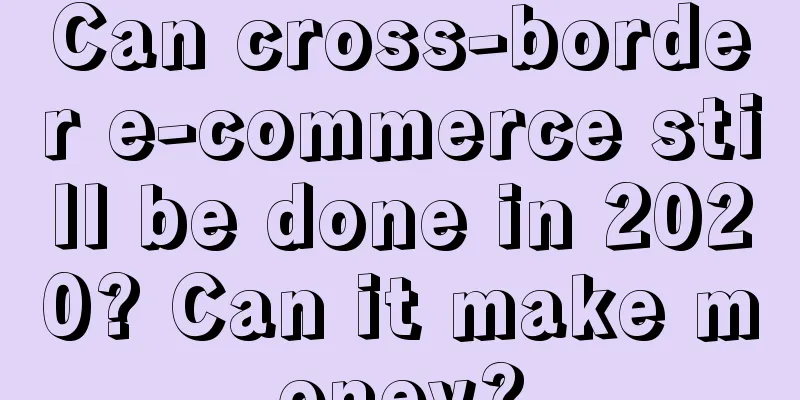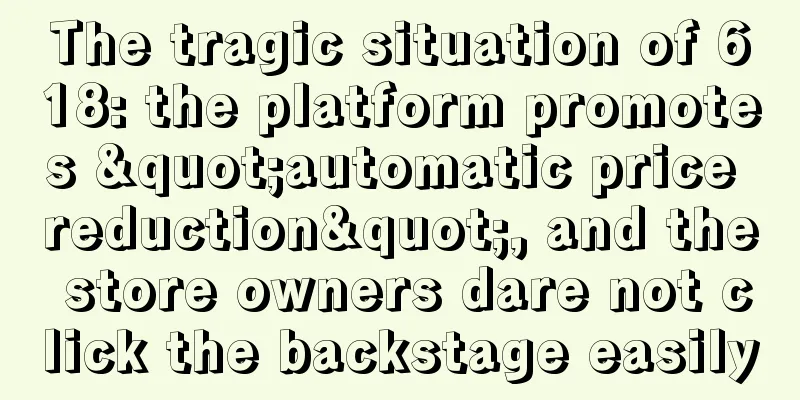We studied 10+ brand cases and found the three keys to brand growth "sense of security"

Since entering 2023, Morketing has clearly felt the "traffic anxiety" of some brand people in conversations, especially those brands that once relied on traffic dividends to rise rapidly. After the traffic law became invalid, they were like a small boat, drifting with the waves, and almost all fell into growth difficulties to varying degrees. For a time, the proposition of shaping brand power was raised again, and it seemed to have become the biggest source of "security" for brand growth in the era of stock competition. So, in this era of stock competition, how should consumer brands enhance their sense of security in growth? In fact, many years ago, former Coca-Cola Chairman Woodruff once said: "If my factory is destroyed by fire, if I encounter a global financial crisis, as long as I have the Coca-Cola brand, I can stand up again the next day." This is because brand is the biggest Matthew effect in society. Under pressure, strong brand power will allow companies to maintain resilient growth and stress resistance, and become the biggest confidence for companies to cross cycles and achieve growth. As Woodruff said, those companies that can cross cycles often spend a lot of energy on brand building. However, it is easy to shout slogans for brand building, but it is very difficult to actually implement it, so in this process, we need to find effective "ways and methods". Recently, Morketing summarized three key methods from multiple brand cases to enable brands to create a sense of security in growth:
So, how should it be implemented during the execution process? 1. Turn “traffic” into “retention” and strengthen the brand to achieve continuous compoundingThe first step to creating a sense of security in brand growth is actually to change your mindset - from chasing traffic to convert it into sales, to accumulating retention to build a brand and earn compound interest. Nowadays, many brands are increasingly aware of the need to build their brands and plan to invest more budgets to run their businesses in the long term. However, they often shout slogans loudly, but when it comes to the actual launch, they think they should still achieve sales and survive first, so they tend to focus on results. This will form a vicious cycle in the long run. However, in Morketing's view, chasing traffic is just "defense" while building a brand is "advancement". Looking at those brands chasing traffic, they can only seize the temporary bonus period, and what they can "guard" is just the "calculated sense of security" in the short term. But in the long run, without the support of brand building, they are always in a state of panic and lack a sense of security. Because, for these traffic players, they know that no one can always step on every outlet, but as long as they miss an opportunity, they will be left far behind by competitors, or even disappear in the market. And this fatal problem is also the key reason why many consumer brands find it difficult to develop further after they have initially taken shape. In fact, long-term brand building and short-term business foundation are not mutually exclusive. In the whole process of brand building, converting traffic into retention, earning compound interest and more brand premium is the embodiment of the brand's long-term profitability. For example, Coca-Cola, Procter & Gamble, Nike and other companies that have survived various economic crises all have a typical feature: strong brand. Therefore, only by continuously building your brand can you make your brand the "first choice" of consumers among a host of competing products, and generate continuous repurchases. It may even become the "only choice" when consumers are cautious about consumption during an economic downturn. For example, during the epidemic, many brands cut their marketing budgets or stopped advertising. At that time, Yuanqi Forest did the opposite, increasing its marketing budget instead of reducing it, seizing the window period of brand advertising, and reinvesting in targeted advertising when the volume of competing products weakened, which quickly made its brand awareness popular and consumers had a deeper impression of Yuanqi Forest. Today, Yuanqi Forest has long become a leading brand of "sugar-free beverages", but it still continues to invest and continuously build the brand's mental moat. And when the brand mind is built, traffic will follow. It can be seen that the more the economy is depressed and the more prominent the "Matthew effect" is, the more brands should seize this excellent window of opportunity to promote and enhance their brands, invest more in brand building, and occupy more market share. The compound interest value generated by this brand building is actually "progress" and can provide a "sense of security" for the brand in the long run. So, in the process of brand building, how can we balance short-term sales and long-term value? Nowadays, a relatively easy-to-use media marketing model is "WeChat, Douyin, and Xiaohongshu Focused Marketing", which means first using the online "WeChat, Douyin, and Xiaohongshu" platform to promote products, spread the word, occupy the minds of some target users and generate purchasing behavior. Then, offline, use the power of focused media to break through the short-term traffic dilemma, expand brand influence, and ultimately achieve high-quality growth. It is worth noting that Focus Media’s advertising is not a one-time investment, but an accumulation of brand digital assets. Brands can achieve sales goals through refined operations of these digital assets, ultimately bringing continuous compound interest to the brand. On the one hand, Focus Media’s exposure data can flow back to Tmall’s data bank for post-link analysis and follow-up of factors such as interest, purchase, and loyalty. Brands can analyze and re-deliver these returning people who have seen Focus Media ads, resulting in stronger conversions. On the other hand, after brands have used Focus Media to build their influence and brand power offline, they will be able to increase their premium capabilities to a certain extent, making more consumers willing to pay for them. In the long run, brands will gain more profit margins and voice, forming a "positive cycle" of continuous compounding. 2. Grasp the certainty and deal with the ever-changing with the “unchanging”Of course, in addition to turning traffic into "retention", after changing the mindset, we must also find certainty. That is, bet on the "unchanging" things and respond to "everything changing" with "unchanging". No matter how the external environment changes, the successful brands in the market always keep investing in two things: First, differentiated brand positioning; Second, high-quality communication. These are also the two major paths that brands want to take to create a sense of security for growth. Ten years ago, when all tracks were in the blue ocean market, consumers had relatively few choices and competition between brands was not very fierce. But the current market environment has changed dramatically. Based on Tianyancha data statistics, in the beauty track alone, in the past five years, the number of domestic beauty brands has increased from 2,721 in 2018 to 4,123 in 2022, an increase of more than 50%. It can be seen that the track is becoming more and more crowded, and the era of stock competition has arrived. Looking at the platform side, whether it is Tmall, Douyin, JD.com or other e-commerce platforms, the lists of various categories during the promotion period are becoming more and more segmented. In these growing lists, there are always some brands on the list, but others are just short-lived and are constantly replaced by new entrants. In the final analysis, it is still because the differentiated positioning is not done well enough. For example, there are two unknown soaps on the supermarket shelf. Consumers may buy one of them after considering factors such as price, or give up the purchase after some thought. But if Safeguard soap is added to the options, the thinking process can be largely omitted and Safeguard can be directly selected. Due to 20 years of market education, the differentiated "sterilization" effect of Safeguard has long been deeply rooted in the hearts of the people and recognized by consumers. When Safeguard first entered China, it was able to defeat a number of brands such as Lux, and it also relied on the differentiated advantage of infinitely magnifying its own brand positioning to establish the mindset of brand as category. Therefore, in this market where each track is extremely competitive and each category is extremely segmented, the more brands need to clarify their own differentiated advantages and find their own value points, so that they can better occupy the minds of consumers in the competition in the same track, build a brand's mental moat, and achieve lasting and geometric growth. And this moat built through differentiated advantages is the "sense of security" for brand growth. After determining the brand’s differentiated advantage, which is the “1”, high-quality media communication will be the “0” behind it, exponentially amplifying the brand’s memory point and brand value. In this process, brands need to think about media placement strategies in advance. In the Internet era, massive amounts of content continue to raise people's threshold for receiving information, making media touchpoints increasingly fragmented and decentralized. The past approach of high-profile and wide-ranging media placement and relying solely on fragmented media placement are both difficult to form a strong brand mindset in the current era. Centralized mainstream media often have the characteristics of "high coverage, high quality, and high influence". On the one hand, it is easier to reach high-quality people with consumption power, decision-making power, and sufficient cognitive level. On the other hand, professional media has stronger user stickiness and greater influence, which can strongly endorse the brand's reputation. Therefore, the way of delivery should be focused from fragmentation to centralization, and choosing high-quality centralized media will make it easier to get good results. The breakthrough of Jianchun yogurt just proves this path. After finding the differentiated characteristics of "no additives, 0 sucrose", Junlebao Jianchun focused on high-quality centralized media such as Focus Media and CCTV to magnify its advantages. Online, Jianchun has raised its brand profile and trust through CCTV; offline, it has continued to place Focus Media elevator ads to cover the mainstream population, seize minds and ignite the brand. Today, Jianchun has become the leader in the zero-added sucrose yogurt category, with a far-leading market share. According to public data, even during the epidemic, Jianchun's annual sales volume exceeded 1.4 billion cups. In short, in the era of inventory, every brand needs to clearly find its own differentiated advantages and cooperate with centralized high-quality media to amplify its advantages in order to continuously build strong brand power and continuously deliver brand value to consumers. 3. Two major strategies to seize the market initiativeReturning to market competition, for brands at different stages, if they want to truly seize the initiative in the market and be remembered by users, there are only two ways to go: become a leader and engage in innovation. Becoming a leading brand can be said to be the goal of all brands. According to market statistics from different industries, any brand that becomes the first in a category often has a market share twice that of the second brand in the category, and the second brand has twice that of the third brand. Once this market structure is formed, it will become a stable and long-term market situation. From the perspective of the brand, becoming a leading brand means occupying more market resources and greater exposure, and gaining long-term market advantages. From the perspective of consumers, when they buy products, they will naturally choose the first in the category. For example, when they think of cola, they will buy Coca-Cola; when they think of herbal tea, they will choose Wanglaoji; when they think of cheese sticks, they will choose Meiji Landou; when they think of sugar-free sparkling water, they will choose Yuanqi Forest. After this natural choice of consumption is formed, brands do not need to waste their words, and the strong brand effect will make consumers actively continue to repurchase. This involves two situations: one is that the already mature leading brands want to maintain their advantages; the other is that the brands that want to become leading brands are moving towards the top. If you are already a leading brand, you must be more courageous and firmly invest resources in brand building, continuously widen the gap with other brands, and become a strong brand preferred by consumers. Especially during the period of stock competition, all companies are facing great pressure, but the more depressed, the more they must invest in marketing in exchange for a larger market. For example, Meiji Landou and Ulike, two major domestic consumer brands, have become typical representatives of leading brands in their categories through continuous investment. Since 2016, Miko's Landau has been placing elevator TV ads on Focus Media at a high frequency. This resolute marketing move has allowed it to advance and break through the circle over the years. Not only has the slogan "Choose Miko's Landau for cheese" been deeply rooted in people's hearts, but Miko's Landau has also become the first choice of cheese brands for consumers. Today, Miko's Landau has a market share of 35.5% in the cheese market, ranking first in the industry. Let's look at Ulike. After reaching the ceiling of online traffic, Ulike began to turn to targeted advertising. After several rounds of resolute targeted advertising, Ulike ushered in the transformation of the brand from "goods find people" to "people find goods", becoming the first in the hair removal device category and having its own brand traffic pool. Both of these brand cases prove that by investing resources and becoming a leading brand in the industry, one can indeed firmly occupy a dominant position in the market and firmly grasp the initiative in the market. However, it is often difficult for new brands to shake the long-standing market position of mature brands. At this time, it is necessary to find new ways and explore opportunities to become the leader in new market segments in an innovative way. In the process of innovation, new brands must first figure out whether their products are the first choice in a certain category, the first choice for a certain group of people, or the first choice for a certain scenario or function. For example, who is the first choice for the wet toilet paper category? Deyou. Before Deyou, the wet toilet paper category was relatively blank in the domestic market, and consumers did not develop the habit of using wet toilet paper. The first choice for the crowd, Winona's special care cream is the first choice for people with sensitive skin. The first choice for the scene, for example, Juewei Duck Neck launched a creative slogan for the overtime scene of workers, "What overtime without Juewei Duck Neck", which established a natural connection between Juewei Duck Neck and the overtime scene. The first choice for function, for example, the "heat and dampness removal" function of Taiji Huoxiang Zhengqi Oral Liquid, Xiaopeng Motors' range of 706 kilometers exceeds the 500-kilometer range of similar competing cars, etc., naturally became the first choice for the function of this category. After clarifying its preferred advantage in a certain category, the brand can then break through the circle and spread the brand through the power of a series of centralized media represented by Focus Media, so as to have a chance to win the battle for existing market share and seize the initiative in the market. No matter which strategy you choose, in fact, it requires long-term persistence and investment from the brand. At the same time, you must continue to pay close attention to market trends and consumer feedback, and adjust strategies in a timely manner to occupy a high position in the fierce market competition. Of course, all methods and strategies are based on "brand power". Only by building strong brand power can you better get rid of traffic dependence, return to your own business rhythm, and find new growth for the brand. Author: Morketing, Source: WeChat public account: "Morketing" |
<<: Short plays are flocking to mini programs
>>: Three-piece set to stimulate demand: content, scenarios, and KOLs
Recommend
Why are there more and more advertisements in your circle of friends?
In the digital age, WeChat has become an indispens...
Are Shopee and Lazada profitable? Are they easy to run?
Shopee and Lazada are two different cross-border p...
It will go viral as soon as you write! Three tips for running Xiaohongshu
This article shares how to improve content perform...
What businesses has been fattened by “Wukong”?
Since the launch of the domestic 3A game Black Myt...
What should new sellers sell on Amazon? What products are good to sell?
As a new seller, joining the Amazon platform is a ...
What does PayPal identity verification require? How long does the review take?
When merchants enter the cross-border e-commerce p...
How to quickly place orders in a new Shopee store? Experience sharing
The Shopee platform is developing faster and faste...
Wangjiawei, SK Rabbit, King Cat...30 brands use New Year's hot products to get a head start in 2023!
Adding effective images to products is a common id...
Rumors are flying everywhere, is the originator of internet celebrity desserts really going to be out of fashion?
Do you still remember the desserts like Mango Sago...
Alibaba International Station tutorial sharing, how can newbies get started?
Alibaba International Station is a global trade pl...
What does it mean when a cross-border e-commerce order is closed? What is the difference between an order being canceled and closed?
In cross-border e-commerce, sellers and buyers oft...
The explosion of urban IP: the cultural potential and emotional power behind traffic
From Zibo barbecue to Tianshui spicy hot pot, and ...
The “poor guy’s meal package” is available again, what are the brands trying to do?
This article introduces the frequent occurrence of...
New trend in single economy!
The consumption trend of the consumer market is in...
Having learned the essence of Zhou Hongyi, who will take over the traffic of the leaking Maybach?
The car owner's rights protection has attracte...









